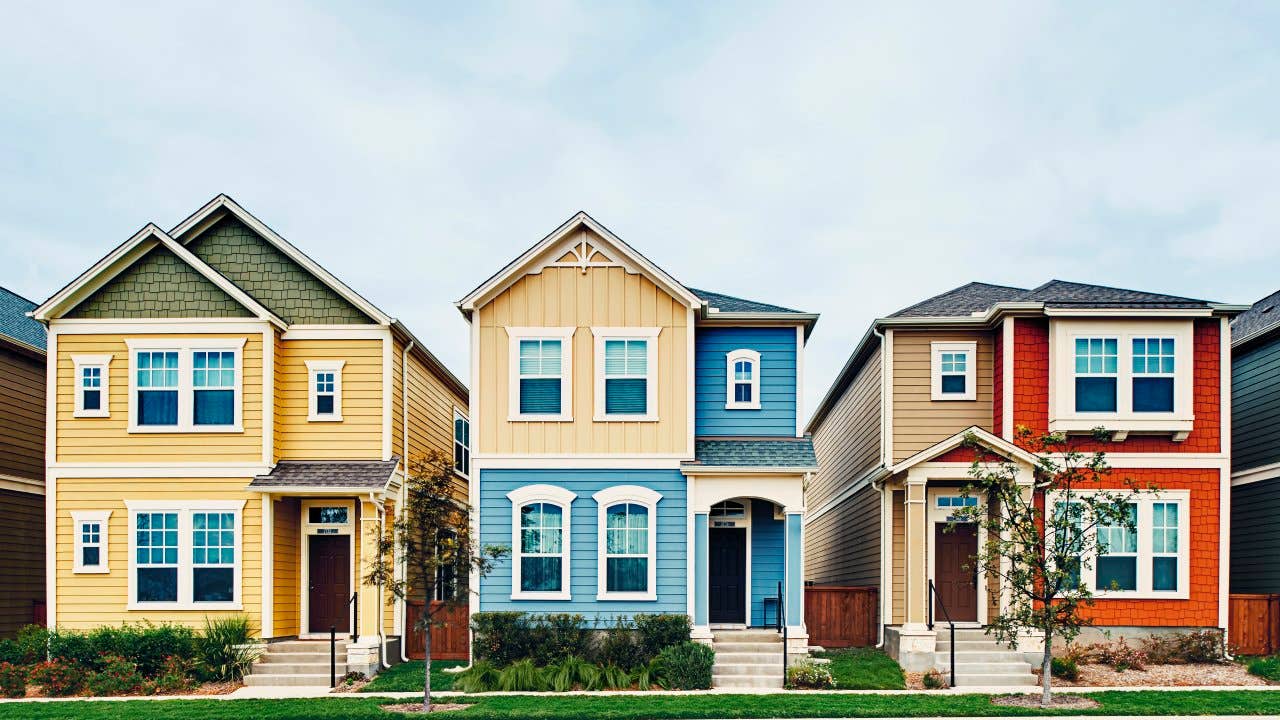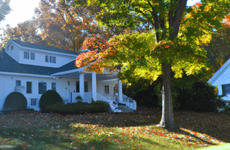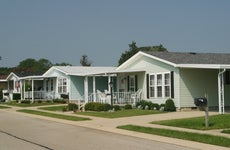What is a single-family home?

The Bankrate promise
At Bankrate we strive to help you make smarter financial decisions. While we adhere to strict , this post may contain references to products from our partners. Here's an explanation for .
Our writers and editors used an in-house natural language generation platform to assist with portions of this article, allowing them to focus on adding information that is uniquely helpful. The article was reviewed, fact-checked and edited by our editorial staff prior to publication.
Key takeaways
- A single-family home is a standalone residential structure, designed to be occupied by an individual household.
- Townhouses can be considered a type of single-family home, despite being attached to other units.
- Single-family homes typically offer more privacy and space than other residential types, which usually translates to higher prices.
In the real estate world, there are a dizzying number of phrases to know and understand. This is especially true if you’re looking to buy a new home, since you’ll need to learn the terms used to describe different types of property.
One term you’ll hear often is single-family home. It seems self-explanatory, but what is a single-family home exactly? Do you have to have a family to live in one? How is it different from other types of homes, and what are the implications of buying one? Find out below.
Single-family home definition
A single-family home has nothing to do with how many people live there. In most cases, it’s exactly what you’d imagine it to be — a freestanding home set alone on its own piece of property. It can be occupied by a single individual or a big family, as long as the occupants constitute a single household.
Definition
- Single-family home
- A single-family home is essentially a standalone residential structure, designed to be occupied by just one household. This house is an independent entity with its own land and facilities, like a unique kitchen, separate walls and individual utilities.
The government provides a broader definition. According to the U.S. Census Bureau, single-family homes may be “fully detached, semi-detached, row houses and townhouses.” However, for a dwelling that’s attached to other homes to be considered a single-family home, it “must be separated from the adjacent unit by a ground-to-roof wall.” Also, units that are attached in some way must not share heating or air-conditioning systems or utilities, nor have other units located above or below.
Single-family home vs. multi-family home
You may be wondering if a single property that hosts multiple units can be considered a single-family home. An example might be a structure on a single lot that has a primary residence downstairs and a small apartment upstairs.
The answer is no: A single-family home cannot have multiple units, because it wouldn’t meet the characteristics of housing set by U.S. government agencies. A home with multiple units would share interior walls, and each would presumably have their own kitchen, bathroom(s) and utilities.
A townhouse, however, can be considered a single-family home, despite the fact that it is attached to other units. Townhouse owners have ownership of both the interior and exterior of their home, along with the land it’s built on. Each townhouse is a singular, privately owned dwelling unit designed for a single household, and any shared walls will extend the entire length of the structure, ground-to-roof, with no common or shared space.
Pros and cons of living in a single-family home
If you’re considering a single-family home, there are some major advantages and disadvantages to be aware of.
Pros
- More privacy: Since single-family homes usually sit on a parcel of private property and don’t share walls, you have a high level of privacy. Noise levels matter a lot less when there are no wall-sharing neighbors to hear you.
- More space: Single-family homes tend to be bigger than multi-family dwellings. They also typically have more storage space, including exterior storage space like a shed or garage.
- More exterior options: Single-family homes make it easier to personalize your landscaping. You can add to or modify the structure more easily with this type of home as well.
Cons
- Higher prices: Single-family homes often cost more than other types of properties — especially if they’re set on a lot of land.
- Less income potential: Single-family homes can’t really generate income for residents. In contrast, in many multi-family properties, the owner lives in one unit and rents out the other units, which brings in regular income to help cover the mortgage or other expenses.
- More responsibility: Unless your single-family home is part of an HOA community that provides basic services, you’ll have to hire help to deal with maintenance and repairs — or do it all yourself.
Financial responsibilities of single-family home ownership
The financial responsibilities of owning a single-family home are numerous and varied. They include maintaining a savings fund for home maintenance and emergency repairs. By staying on top of regular maintenance tasks, you can avoid a minor issue turning into a major problem. Acquiring do-it-yourself skills can help save you money on day-to-day upkeep and small repairs. And remember that the more land your home is on, the more expensive its upkeep — mowing, landscaping, tree services, etc. — will likely be.
You’ll also need to plan for typical homeownership costs like property taxes, homeowners insurance premiums and HOA fees (if applicable). Remember the acronym PITI, which stands for principal, interest, taxes and insurance, to help you manage your monthly mortgage payments.
Who are single-family homes best for?
There’s no perfect home that will suit everyone’s tastes. Where some homeowners prefer a single-family home with a huge yard and plenty of room to spread out, others prefer a multi-family property they can use to earn rental income. Others still prefer a low-maintenance condo or townhome that includes HOA benefits like landscaping and snow and leaf removal.
For the most part, single-family homes are best for owners who can afford the luxury of more space and privacy — and who have the time and money required for general maintenance and upkeep.
Of course, the best housing situation for someone can change as time goes on. For example, many couples downsize when their children grow up and leave home, and many retirees move into condo communities where some of the maintenance chores of homeownership are taken care of for them.
Other housing types
| House type | Who it’s right for |
|---|---|
| Apartment | Apartments are well suited for anyone looking to stay in a prime location near shopping, restaurants and entertainment options, often at a more affordable cost than buying a condo or single-family home. |
| Condominium | Condos appeal to those looking for lower-maintenance living, and a home with a sense of security and opportunities to be social with neighbors, among other factors. |
| Townhouse | Townhouses are a particularly good option for first-time homebuyers or other budget-minded buyers who want more space than typically offered in a condo. |
| Modular home | Modular homes are enticing to empty-nesters looking to downsize, couples looking for backyard units like tiny homes or families looking to upgrade their dated properties in nice but expensive neighborhoods. |
| Single-family home | Single-family homes are best for families who prefer a big yard, privacy and plenty of room to spread out, and who can afford the maintenance and upkeep. |
| Multi-family home | Multi-family homes are good for those who are interested in getting into real estate investing and are comfortable with the added responsibility and time commitment that comes with being a landlord. |
| Bungalow home | At between 1,000 and 2,000 square feet, bungalows are a great option for young families looking for a starter home, retirees hoping to downsize or homeowners who want the single-family-home lifestyle without managing a huge property. |
| Co-op | Co-ops are most often found in major cities, and they can be good for those looking for security or neighbors who largely adhere to the building’s rules and policies. |
| Patio home | Typically capped at one-and-a-half stories and part of a larger association, patio homes are best for homeowners who don’t want to deal with a lot of stairs or maintenance. |
| Ranch home | Ranch homes are ideal for anyone who prefers single-story living. Singles, couples and large families alike can find something to love about a ranch home. |
Bottom line on single-family homes
Single-family homes are certainly one of the most popular real estate options out there — they are what people usually have in mind when they think about the American dream of homeownership. The increased privacy and space are appealing. But don’t forget to consider the added responsibilities and costs when deciding on the right choice for you and your family.
Related Articles



